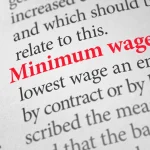Need to know about the upcoming changes to Class 1 NI, how they’ll impact your business, and what you can do to reduce the effect? You’re in the right place.
In this post, we’ll break down the changes, show you how to calculate the new costs, and explore ways to reduce the impact.
What Is Class 1 National Insurance?
Also known as Employers’ National Insurance, this is an additional cost that employers pay on top of each employee’s gross salary.
-
It’s not deducted from employees’ pay like PAYE or Employees’ NI.
-
It may show on payslips for transparency, but this is not a legal requirement.
-
The money helps fund state benefits such as pensions, the NHS, and social support.
What’s Changing from April 2025?
As announced in the Autumn 2024 Budget, two major changes will take effect:
-
Employer NI rate increases from 13.8% to 15%
-
Secondary Threshold reduces from £9,100 to £5,000 per year
(That’s £417 per month or £96 per week)
How is employers NI calculated?
Here’s a simple breakdown to help you calculate the new cost per employee:
Example:
-
Monthly gross salary = £1,500.00
-
Secondary Threshold = £417.00
-
NI calculation: (£1,500.00 – £417.00) × 15% = £162.45
So, in this example:
-
The employer pays £1,500.00 in salary
-
Plus £162.45 in Employers’ NI
-
Total monthly payroll cost = £1,662.45
Before April 2025, the Employers’ NI would have been £102.40, so this is a £60.05 increase per month per employee.
For weekly-paid staff, use the weekly threshold of £96.00 instead of £417.00.
What is Employment Allowance?
Employment Allowance lets eligible employers reduce their NI bill by claiming a fixed amount each year through PAYE.
-
Claimed via your Employer Payment Summary (EPS) and Full Payment Submissions (FPS) to HMRC.
-
Can be offset against your Employers’ NI until you reach the limit.
New from April 2025:
-
The annual allowance increases from £5,000.00 to £10,500.00
Are You Eligible for Employment Allowance?
You can claim if you are:
-
A limited company with one or more employees (not just directors)
-
A sole trader with employees
You cannot claim if:
-
You’re a limited company and the only employee is also the sole director
However, if your company has two or more directors, and both earn over £5,000, you may be eligible.
For full details, visit the official Gov.UK website.
Final thoughts on Employers NI changes from 06th April 2025
While these changes may seem like a cost burden, many small and micro employers may see no difference once they apply the updated Employment Allowance. In some cases, your business might even pay less NI overall.
If you’re a sole director, these changes may affect you more directly—read our dedicated post here for advice.
Many employers are also considering Salary Sacrifice pension schemes to reduce their NI liabilities. These schemes can save money, but make sure you understand the rules around parental leave and sick pay before you make the switch.
Need Help with Employers’ NI or Payroll?
We’re here to support your business.
Call us on 01273 56 92 27
Or complete our Get in Touch form
Let’s make payroll easier.





